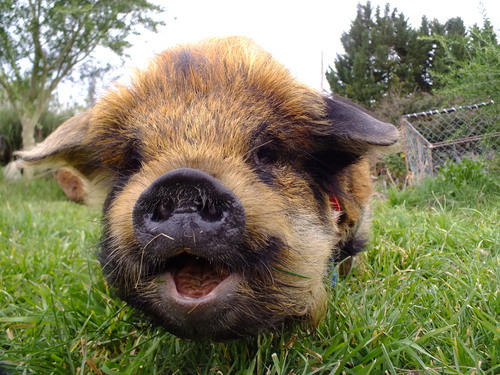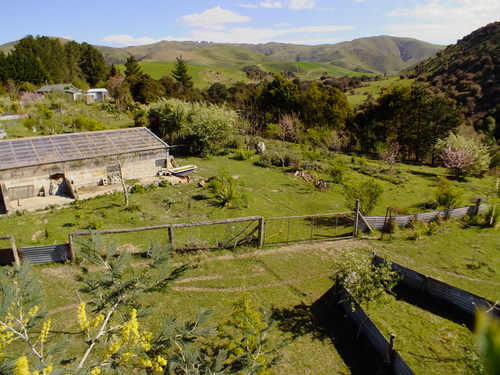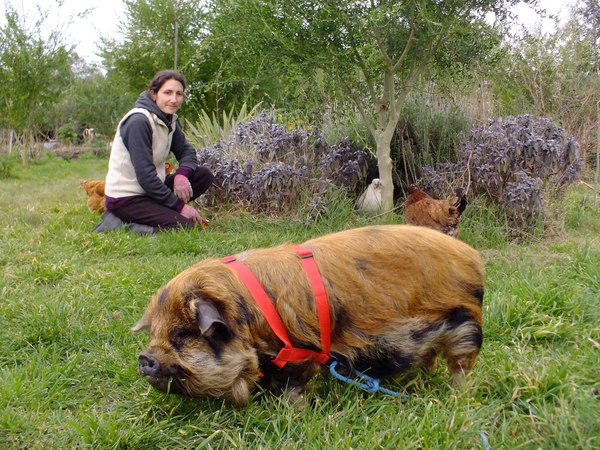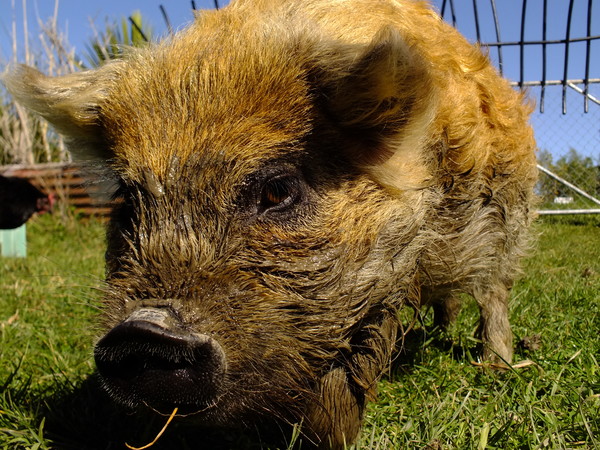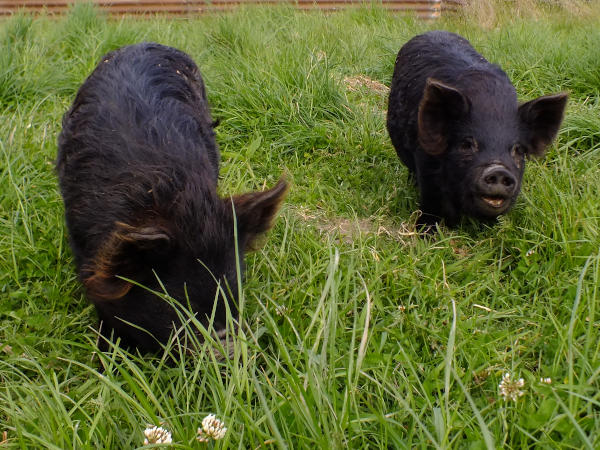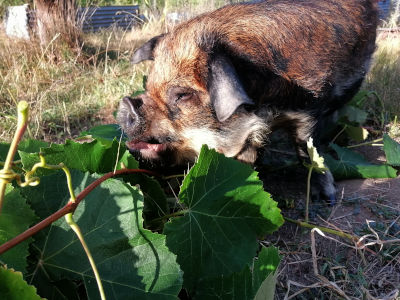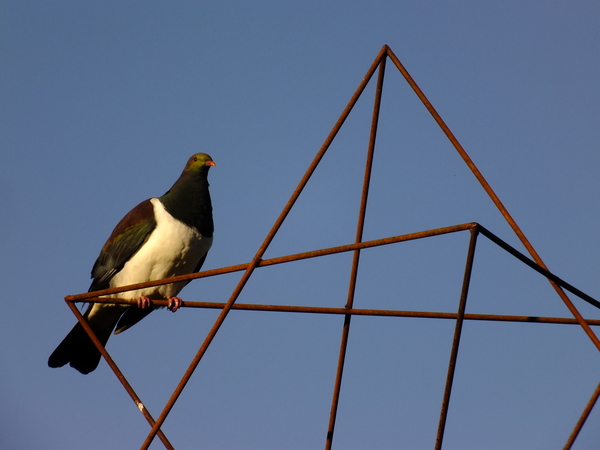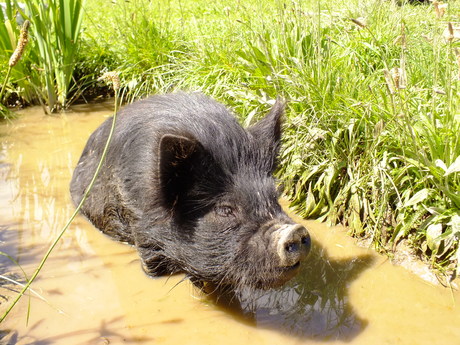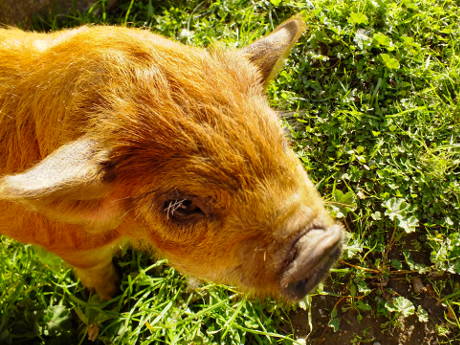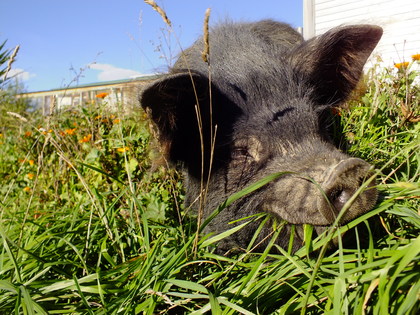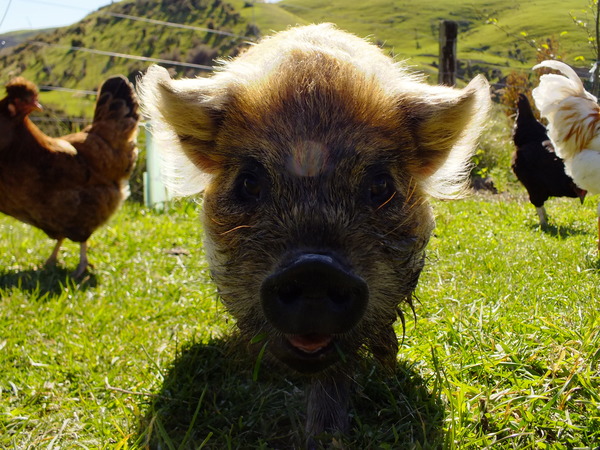Found 12 results tagged with 'pig'
Click tags to include or exclude from results
Pigs in the young food forest
During the day the animals are free to roam up to 1 hectare of emerging food forest which is broken into 8 sections (paddocks) of various sizes.
Many of our pig fences are constructed from short log posts driven into the ground and joined by a horizontal run of old corrugated iron since. An obvious choice since there were stacks of it here. Wire fences will not contain a pig, they can force their way under and through.
We find that by providing plenty of space and regulating their access to different areas means they get plenty of variety, don't over graze and start rooting up the ground or interfering with young trees (much). Limit the number of pigs you have!
During drought and where pasture is poor the pigs will seek out green leaves of pip and stone fruit, willow and possibly some others. Surprisingly they don't interfere with tagasaste.
Unsurprisingly they love fruit. So any young, small trees can be snapped or damaged and branches in reach can be broken, trunks gnawed on in their efforts to reach or dislodge fruit. The best option is to remove all fruit on young trees and remove low branches until the plant is sturdy and above pig height.
Pig on a leash
Rota and Mowa the kunekune pigs
We picked up a deal with some guy giving away these 6 month old kunekune girls.
Very friendly, seemingly live on grass and hopefully turns the ground for planting.
Multi function pruning
We combine the chore of summer pruning fruit trees with a treat for the pigs and have found they love to eat most stone and pip fruit leaves as well as grape and willow.
Native Wood Pigeon / Kereru
Rota takes a bath in a swale
Grubba, the ginger pig
Grass fed kunekune pigs
Provided the pigs have plenty of grass and other green edible herbage they seem to leave young trees alone. We have found that at certain times leaves of peach, almond and apple may be palatable.
Pigs love to rub and scratch against things, especially after emerging from a muddy bath in the swale. Consider having a suitable tree or post nearby.
Grunt - tail of misunderstood pigs
Grunt - tail of misunderstood pigs is a 10 minute film depicting how pigs are social and intelligent beings. As domesticated animals, pigs are often seen as an object or a good rather than an animal. This documentary sheds light on the fact that pigs can be great pets. It is uncomfortable for many
Win-win-win with pigs and chickens
In addition to the hens and their loyal rooster we keep 3 Kune kune pigs. This is a small breed, hairy and very affectionate. Their roles are as lawn mowers, soil cultivators and manure makers. Kune kune pigs are unique in that they can survive on a diet of grass and need very little supplementary food unless raising babies.
Over the last few years we have been impressed with how the chooks, young chickens, rooster and pigs all get along in the slowly emerging food forest they call home. They range freely together and at feeding time jostle with each other for access to kitchen scraps and grain.
Our chooks and ducks get fed supplementary grain that has been soaked in water. This makes it softer, easier to digest and because it swells up means they don't eat as much.
One unintentional positive side effect of feeding grain to the chickens while the pigs are present is they inevitably end up eating some of it. Being greedy, they swallow most of it whole and it passes straight through and ends up spread around their territory in the manure. The chickens have discovered this and are very eager to get at the grains embedded in the poo. This results in frantic scratching and disintegration of the pig turds resulting in faster breakdown and absorption into the surrounding landscape.
